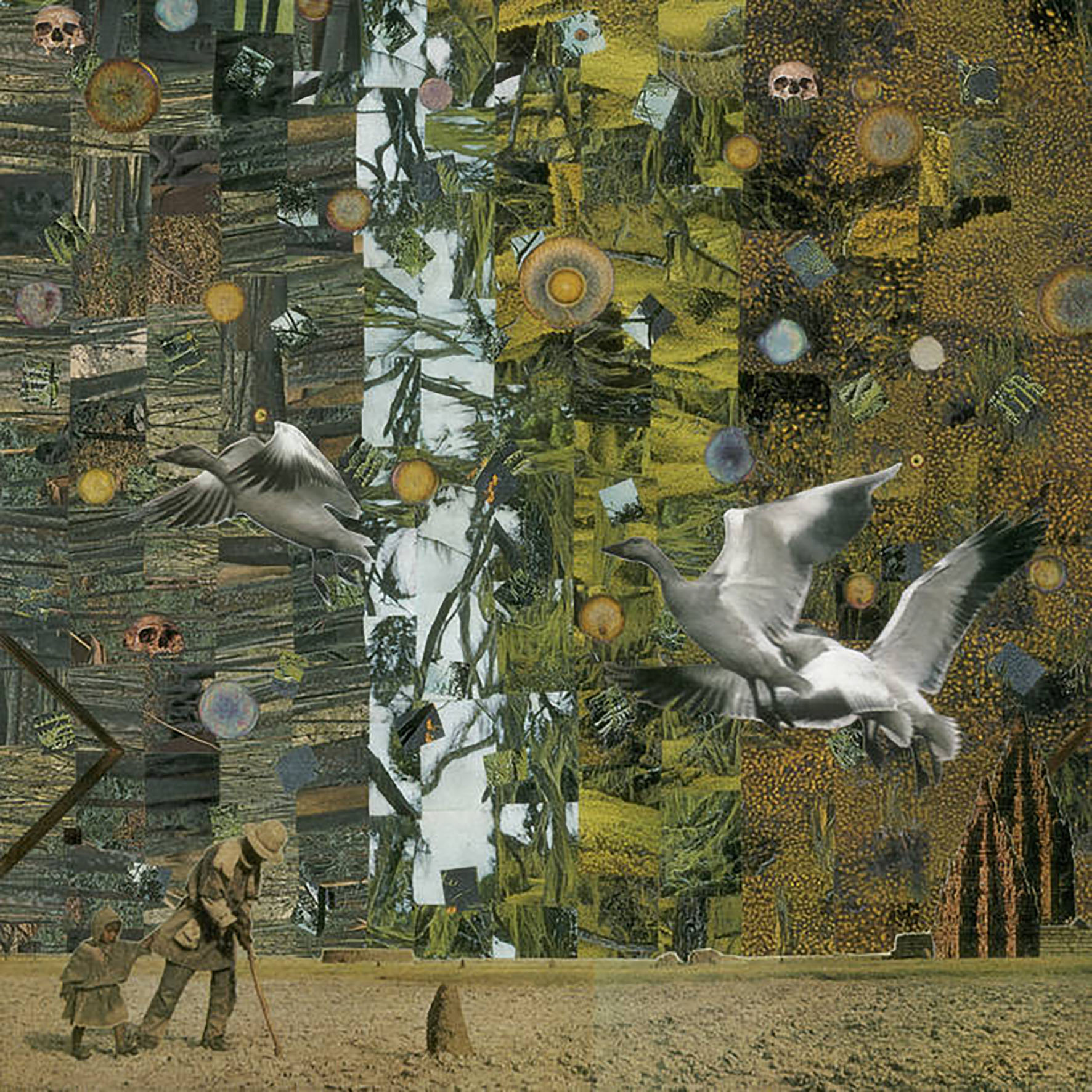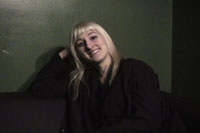William Ryan Fritch, "Built Upon a Fearful Void"
 This latest double album from the California-based Fritch is something of a culmination of two separate long journeys, as it took eight misfortune-filled years to complete and it also concludes Lost Tribe's "Built Upon a Fearful Void" series. While I am not necessarily sure that Fritch himself would agree that the end result was worth suffering through the gauntlet of lost hard drives and water-damaged tape reels that he had to navigate to get to this point, Built Upon a Fearful Void nevertheless meets my dauntingly high expectations for any major new statement from the composer. That said, I am certainly curious about how much the album changed between the ruined tape reels and Fritch's decision to abandon "what remained of the salvaged material" and "rerecord the album entirely using only faint flickers of the old tapes and cassettes." On one hand, some magic simply cannot be recaptured, yet that loss is balanced by the fact that Fritch's work seems to only get better and better with each passing year. In any case, anyone who fell in love with Fritch's work from 2019's Deceptive Cadence will likely love this album too (particularly its first half), as Built Upon a Fearful Void is another impossibly rich and vivid plunge into a dreamlike and cinematic vision of bittersweet Americana (and some other very likable other things as well).
This latest double album from the California-based Fritch is something of a culmination of two separate long journeys, as it took eight misfortune-filled years to complete and it also concludes Lost Tribe's "Built Upon a Fearful Void" series. While I am not necessarily sure that Fritch himself would agree that the end result was worth suffering through the gauntlet of lost hard drives and water-damaged tape reels that he had to navigate to get to this point, Built Upon a Fearful Void nevertheless meets my dauntingly high expectations for any major new statement from the composer. That said, I am certainly curious about how much the album changed between the ruined tape reels and Fritch's decision to abandon "what remained of the salvaged material" and "rerecord the album entirely using only faint flickers of the old tapes and cassettes." On one hand, some magic simply cannot be recaptured, yet that loss is balanced by the fact that Fritch's work seems to only get better and better with each passing year. In any case, anyone who fell in love with Fritch's work from 2019's Deceptive Cadence will likely love this album too (particularly its first half), as Built Upon a Fearful Void is another impossibly rich and vivid plunge into a dreamlike and cinematic vision of bittersweet Americana (and some other very likable other things as well).
According to Fritch, Built Upon a Fearful Void is intended as "a two-part record—meditating on lost epochs, feeble mythologies, and the many deep gulfs in human knowledge and perception," which are certainly themes that resonate more than I would like right now. While I am not sure how the shifting vistas of each individual disc are intended to explore the different conceptual themes, it is quite clear that each disc works as a self-contained album with its own thoughtful and satisfying dynamic arc. While the same instrumental palette ("pipe organ, reed instruments, voice, viola da gamba, prepared piano, pedal steel, viola d’amore, and banjo") remains roughly intact for both of the album's halves, the emphasis shifts emphatically towards more drone-inspired pipe organ meditations for the second disc. In broad terms, that means that the more orchestral first disc is a closer relative to Deceptive Cadence than the second one, as Fritch's gorgeous string melodies are the heart of everything (along with his longstanding passion for vividly realized textures, of course). On the strongest pieces, Fritch's ear for poignant melodies strikes a perfect balance with tactile physicality, elevating such pieces into something a bit more unique and transcendent. Of course, business-as-usual Fritch remains perfectly fine by me as well, even if the thrill of discovery has dulled from my reasonable familiarity with his voluminous discography and its various phases. Still, the bookends on the first disc both handily attain some degree of transcendence for me (particularly the closing "Truest of Truisms"), as Fritch tends to go big with his opening and closing numbers. However, some of the album's most sublime highlights fall between those two crescendos too. For example, "Canary" beautifully marries a lovely viola melody with frayed and haunted-sounding feedback and a viscerally crunching and clanging backdrop of unconventional percussion. Elsewhere, the heaving and rippling "Glossolalia" is a tour de force of spectral, ravaged melodies and churning elemental power. That said, "Truest of Truisms" definitely ends the first disc with one hell of an exclamation point, unfolding as an organically heaving dream of widescreen romanticism, crashing cymbals, and elegantly dancing melodies.
The second disc opens in far more subdued fashion, as the aptly named "Low Smoulder" transforms languorous, sacred-sounding organ drones into a slow-building swell of escalating intensity.Mood-wise, that piece makes for quite a representative introduction to the darker, more minimal second half, which feels a lot like a classical requiem that is either slowly burning up or veiled by supernatural fog.As with the first disc, the second disc too culminates in one of the album's most ambitious and strikingly beautiful pieces.In fact, "A Wilderness to Be Suffered" may damn well be the strongest single piece on the album, as it feels like a slow motion organ mass with the melody loosely doubled by languorous swells of bowed viola da gamba.The actual piece is far more complex and beautiful than that description suggests, however, as the piece seems to blearily twist and wind around itself like curling tendrils of smoke.Elsewhere, "The Shallow Veil" visits similar territory, but the organ theme seems to dissolve into a fog to bring the tender heartache of the viola da gamba melody into stark relief.There are also some nice tape or string noise textures that periodically materialize in the haze, which I wholeheartedly welcome."Critical Mass" heads in a more fluttering and flickering drone-inspired direction, but ultimately arrives at a similarly satisfying balance of hallucinatory, soft-focus sounds and sharper, more anguished-sounding textures.Other highlights include the blearily lovely pipe organ reverie "Untimely," which slowly blossoms into dynamically rich layers of shivering, rattling, and frayed beauty, and the slow-burning one-two punch of "Capacitance" and "Lay Hands Upon Us."I especially love the sounds in the latter, as it almost sounds like a shoegaze-damaged singing saw performance.There are a few other pieces like "The Cooling Board" that deserve mention as well, but it would be fair to describe Built Upon a Fearful Void's second disc as "variations on a theme."Describing the actual theme being varied is bit more challenging, but I am going with "hypnagogic organ mass/heavy-hearted requiem for humanity enhanced with an inventive array of gnarled and gnawed textures."Of the album’s two halves, I currently prefer the more melodic and percussion-enhanced first half, but the whole album is basically a world-building opus in a vein that is all Fritch's own: the sweeping grandeur of the best soundtrack composers colliding with a talented sound designer and a producer with a real knack for subtly smeared and psychotropic textures.Finding all of those facets properly balanced on the same album is rare enough, but encountering them all in the same person feels like stumbling upon a goddamn unicorn in the wild.
Samples can be found here.



